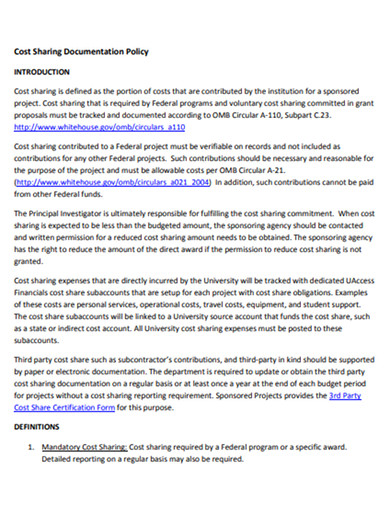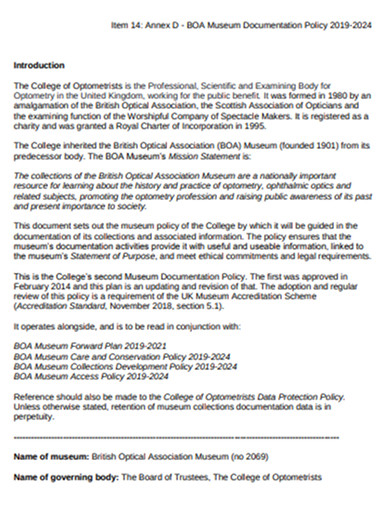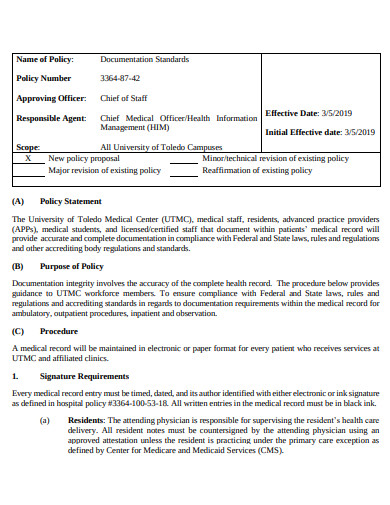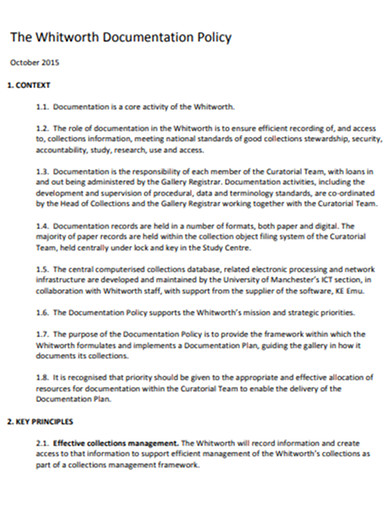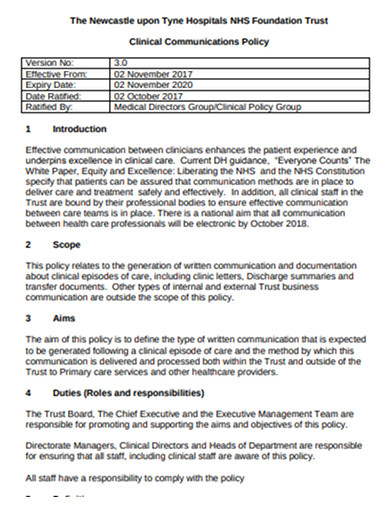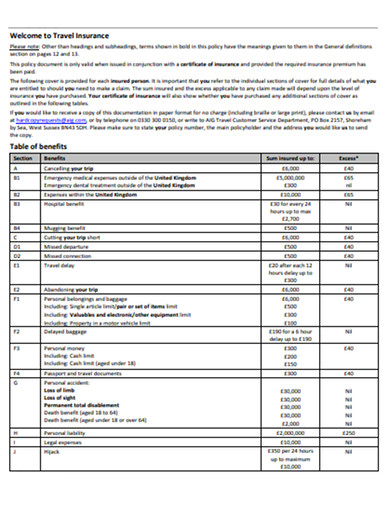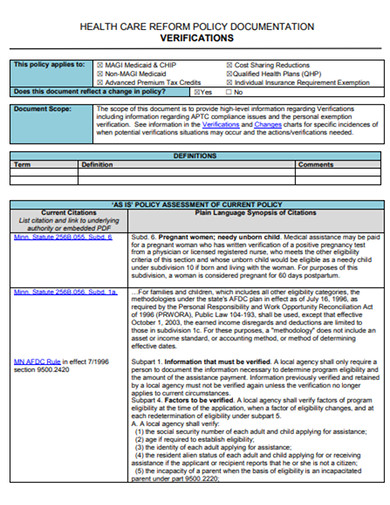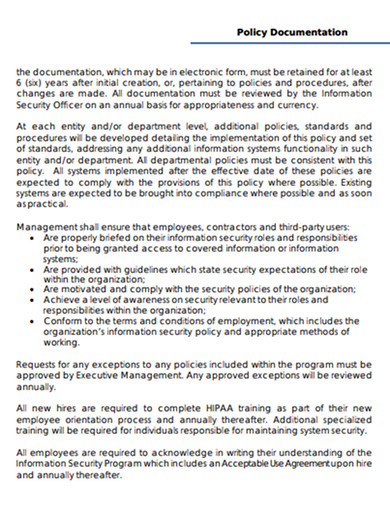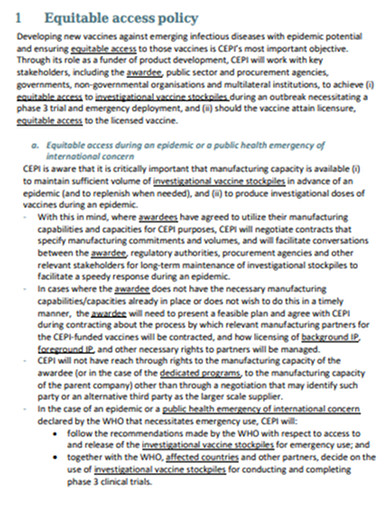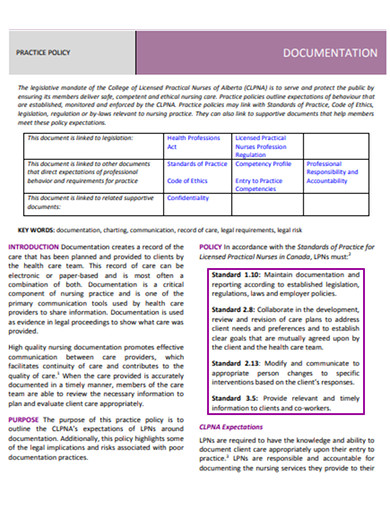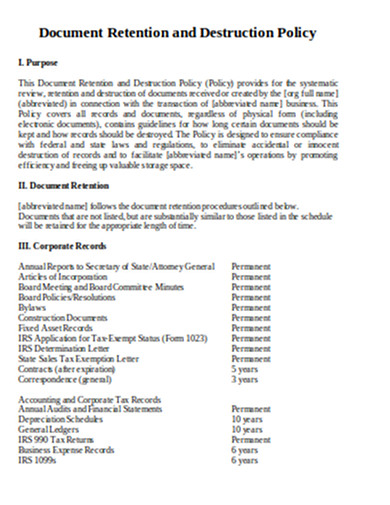10+ Documentation Policy Examples to Download
For nurses, it is nearly impossible to remember everything they do on a day-to-day basis, such as nursing assessments. To make sure that this problem does not affect the quality of the care that the patients get, the nurses who take care of the patients document every relevant activity they perform. In this way, anyone who takes over their shifts can track the previous operations that involve the specific patients and ensure that they get the proper care. Additionally, they are also responsible for assisting their coworkers who are not knowledgeable about the nursing documentation policy to ensure that they keep good nursing records.
What is a Documentation Policy?
Documentation is a material that serves as a record of official information or evidence. Technical writers commonly develop this set of documents as part of a software product to feature its specifications, application security, and instructions following the documentation policy of an organization.
The document control representatives are responsible for the proper governance of these documents for effective distribution and usage. They usually distribute these documents in a written or electronic copy and store them online or any electronic storage. Life insurance policy, HR policy, employment contract, employee confidentiality policy, health safety information, workplace locker agreement, incident management policy, and procedures, etc. are examples of this document.
Documentation Retention Policy
As a business person, it is essential to remember the policy of retaining business documents for many reasons, such as legal purposes. A document retention policy is a set of rules that you can develop for the information management of your company. These records may include both hard copies and soft copies of the documents, such as invoices, employee contracts, purchase orders, and tax returns documents. Managing this information can be time-bounded. For example, the US federal agency Internal Revenue Service(IRS) requires companies to keep business tax returns documents for at least three years from its filing day.
10+ Documentation Policy Examples in PDF | DOC
There are many examples that you can use as a reference to get a better understanding of this type of document. Download the following samples to get more insights on how to build a documentation policy.
1. Cost Sharing Documentation Policy Example
2. Musem Documentation Policy Example
3. Documentation Policy Proposal Example
4. Whitworth Documentation Policy Example
5. Clinical Communications Documentation Policy Example
6. Travel Insurance Documentation Policy Example
7. Health Care Reform Policy Documentation Example
8. Information Security policy Documentation Example
9. Equitable Access Documentation Policy Example
10. Standard Documentation Practice Policy Example
11. Document Retention and Destruction Policy Example
Best Practices for your Firm’s Documentation Management Policy
Applying the documentation policy in a business such as documentation management policy can be daunting because it can add up to your firm’s expenses. Thus, we listed down the following tips, which you can follow to ensure proper management of the documents your company holds.
1. Know the Policy About the Document Retention
The government of the state or country may have implemented specific rules regarding keeping records, such as IRS. Thus, it is essential to know all about these affecting rules to ensure that the actions you take will not come back to you.
2. Determine the Documents that Needs Retention
After knowing the laws concerning records retention, you should be able to determine the documents that you need to keep in a specific period. Apply the same concept to the rest of the papers according to your business needs. These records may include employee records, etc.
3. Create a Document Storage Plan
There are different ways to store your documents. You can use the cloud and other electronic storage for more cost-effective information storage. You can also use the traditional method, which is keeping printed copies and use a cabinet or drawer to categorize them accordingly. This storage method can be expensive and prone to get misplaced but, depending on the nature of your business, this type of approach can be the best that you can choose.
4. Create a Discovery Plan
You keep a document for a specific reason. Through a discovery plan, you will ensure that you can effectively retrieve the data that you need from your storage. For a more effective electronic retrieval process, we recommend you to create a data map. It will ensure that you can keep particular documents according to the business needs and document retention policy.
Obtaining a documentation policy for your business is one way to achieve its corporate goals, making it an essential tool in ensuring company success. Bookmark this web page to serve as your guide in creating your business documentation policy.



